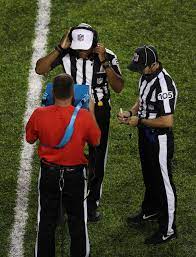Fans liked it so much that they added it to the NFL in 1986 only 23 years after they first used it on live television. But before the fans would like instant replay, they had to make it easier and faster to use in a real time game.
In a game in October 1986, the Raiders, an NFL team, a wide receiver caught a pass in the end zone, which was called a touchdown on the field. The instant replay booth said that the pass was incomplete. They told the referee that it was incomplete over walkie-talkies. The officials heard that it was complete, so the call on the field stood. Because of this, the NFL changed from walkie-talkies to pagers and radio headsets. They also changed from saying incomplete or complete to “confirmed” or “reversed.’’ Instant replay gives referees a second chance to look at plays that they might have missed and change their call to the right one.
“It wasn't like instant replay is today, where a coach could just throw a challenge flag, it was basically a referee decision”, said Lee Vandal a former NDSU linemen
